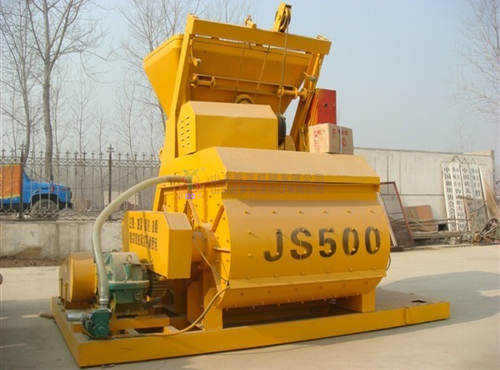concrete mixer
The abnormal setting time of concrete generally manifests as three types: excessive slow setting, rapid setting, and false setting. There are many factors that can affect the occurrence of abnormal setting in cement concrete, including concrete admixtures, cement, admixtures, environmental temperature, and wind speed. From the current quality status of concrete engineering, improper types and dosages of retarders, unsuitability between additives and cement, and environmental temperature are the main reasons for abnormal setting of cement concrete and even concrete engineering accidents.
concrete batching plant
Reasons for excessive retarding of concrete
1. Excessive retarder components in concrete admixtures, especially when there is a high content of sucrose;
2. Excessive mixing of concrete admixtures caused by human or mechanical failures;
3. Misuse of powder ash or mineral powder as cement;
4. Improper design of concrete mix proportion, excessive addition of admixtures, especially when the temperature of the concrete pouring environment is low;
5. Temperature impact, low temperature;
6. Inadequate maintenance, especially when the temperature is too low;
7. Excessive air content in concrete results in an air content of 8-10%;
8. Excessive concrete collapse and even segregation and bleeding can result in high fly ash content and high water cement ratio on the surface of the concrete;

Reasons for rapid setting of concrete
1. There is no retarder added to the concrete admixture or the retarder dosage is insufficient;
2. Cement using hard gypsum and fluorine-containing gypsum as setting agents is prone to rapid concrete setting when using lignosulfonate water reducing agents;
3. Low water cement ratio, inadequate curing, coupled with high ambient temperature and strong wind, premature dehydration of concrete and accelerated hardening of cement;
4. Using sulfoaluminate cement or high alumina cement;
5. Cement has a high content of C3A and alkali;
Reasons for false setting of concrete
1. The environmental temperature is too high, the wind is strong, the concrete loses water too early, the curing is not in place, and it is not covered in time. Especially when preparing high-grade concrete with carboxylic acid additives, the surface of the concrete quickly loses water and hardens, and the lower layer of concrete is still relatively soft and has not set;
2. The adsorption of concrete admixtures by cement, admixtures, sand and gravel aggregates suddenly increases with time, pump pressure, and ambient temperature conditions, and the slump is quickly lost, causing the concrete to scatter like tofu residue. Mainly related to changes in the adsorption capacity of admixtures and their types, as well as cement;
3. The temperature of cement is too high, and the dihydrate gypsum inside the cement dehydrates into hemihydrate gypsum or anhydrous gypsum;
solution
1. In summer, it is recommended that concrete mixing plants do not use cement with a temperature exceeding 80 degrees Celsius to mix concrete;
2. In summer, use underground cold water (with ice if necessary);
3. Timely maintain the concrete to prevent premature dehydration or freezing;
4. Before construction, conduct adaptability tests on cement and concrete admixtures, observe the loss of flowability of mixed concrete, examine the setting time of concrete at that temperature, and determine the suitability of concrete admixtures;
5. Maintenance and reliable operation of mixing plant instruments and equipment;
6. Concrete admixture products need to be inspected, reliable, and of stable quality;
7. Appropriate concrete mix proportion;
8. When encountering abnormally solidified concrete, the specific problem should be analyzed on a case by case basis. If it poses a threat to the quality of the project, it should be removed sooner or later. The earlier, the better. Generally speaking, if the excessive retarding period exceeds 4 days, the concrete strength will suffer significant losses; When false setting occurs in concrete, cement mortar of the same strength grade can be used to re mix and pour before construction, or the mortar can be used to smooth the surface of the concrete. After rapid setting of concrete, if it is not poured into the formwork, it should be firmly discarded. If it is poured into the formwork, it depends on the specific situation to decide whether to chisel or retain it.
Address: No. 818, Jingshi Road, Jinan, China
Tel: 0086-531-87453566
Fax: 0086-531-87453566
Postal Code: 250306
Email: sdjkgroup@163.com
jianke3566@163.com
